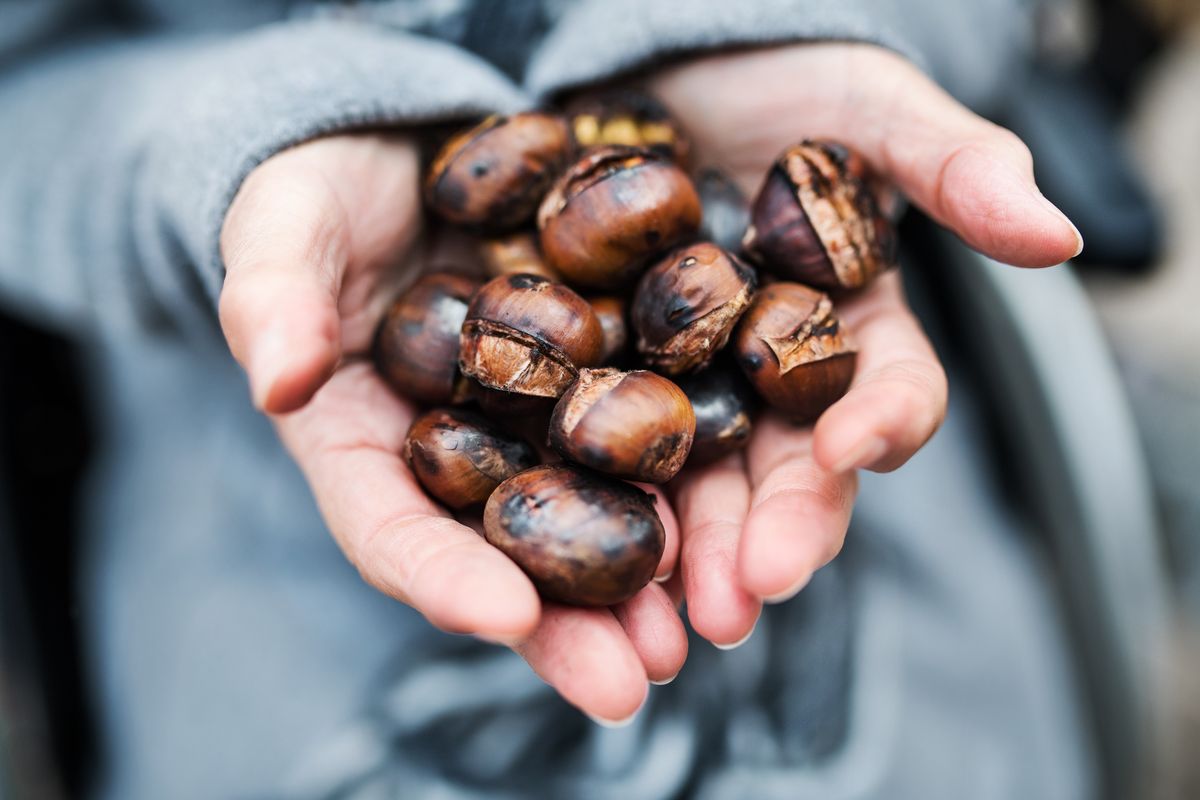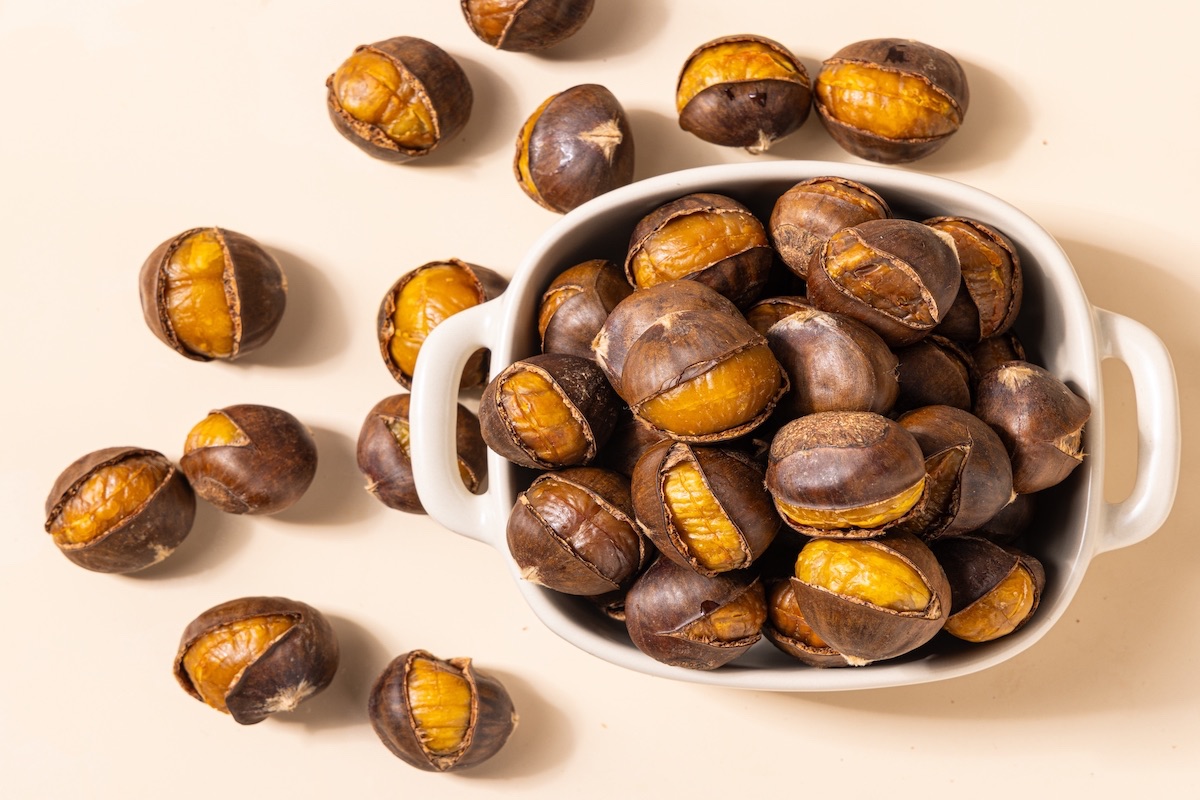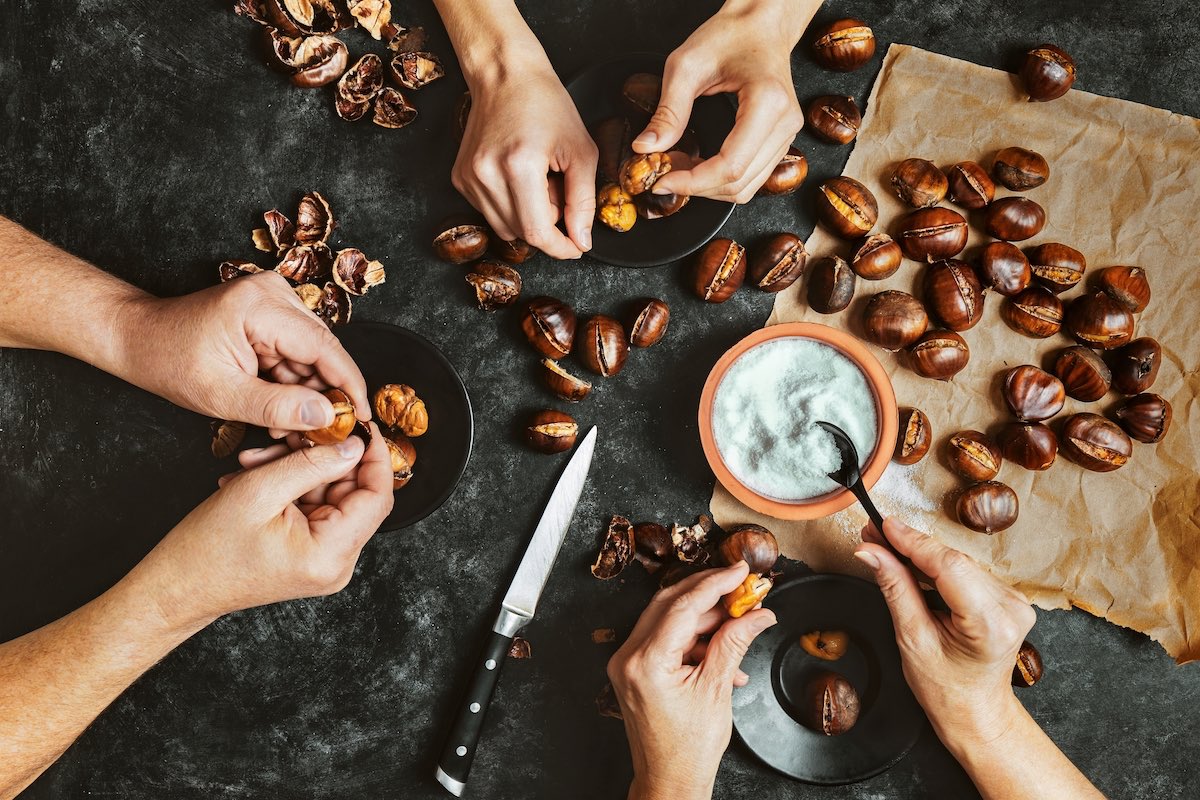Recipes
Baked chestnuts: recipe and advice


Few ingredients and a very simple recipe: making baked chestnuts is truly within everyone's reach. Here are our tips and tricks!
Delicious and crunchy, they are the symbolic dish of autumn: they are baked chestnuts. What's different from classic roasted chestnuts is that they only require cooking and are decidedly easier to make for those who don't have the appropriate pot.
Before starting with the preparation of the recipe we give you some advice : cooking the chestnuts in the oven depends on their size . The smaller ones will take less (about 15 minutes) while, for the larger ones, it will take twice as long; if you don't have enough to make 2 batches, start putting the larger ones in the oven, and after about ten minutes, add the smaller ones too.

How to make baked chestnuts
- Start soaking the sweet autumn fruits in a bowl with water and salt . Leave them for about two hours: this way it will be easier to peel them after cooking.
- Then, dry them, cut them in the belly and place on a baking tray. Cook the chestnuts in a preheated ventilated oven at 220°C for about 20 minutes (keeping in mind that cooking times vary according to size).
- Move them occasionally for even cooking.
- Remove them from the oven and place them – still with the peel – in a bowl. Cover with a cloth for five minutes and then start peeling them: this little trick will allow you to peel the chestnuts more easily.
Alternatively, for an optimal result, we recommend trying the chestnuts in the air fryer . For us they were a revelation.
How to cook chestnuts in the oven: advice
The first piece of advice is to choose only intact and perfectly healthy chestnuts, all the others will still be discarded after cooking (and you will have worked so hard for nothing).
If you have little time, you can also put the chestnuts in the oven without soaking: it will be quicker , but it will take you a little longer to peel them.
We remind you that it is essential to peel them immediately after cooking, when they are still hot or at most lukewarm. Once cold, it is practically impossible to remove the first skin, the one attached to the pulp.
Riproduzione riservata © - WT












